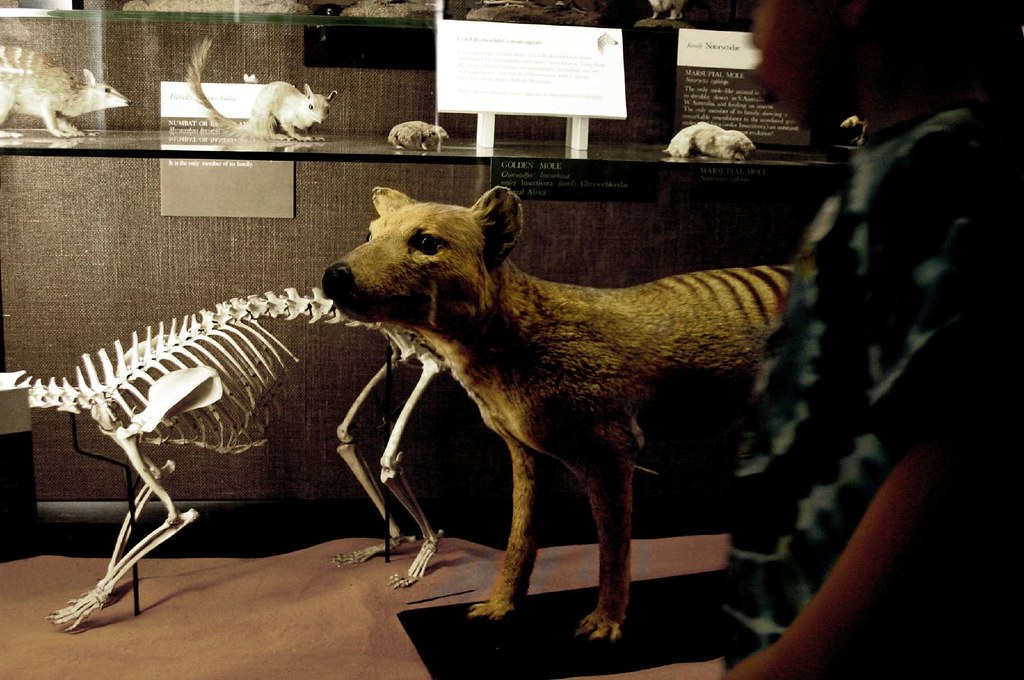
The remains of the last known Tasmanian tiger, believed to have been lost for the last eighty-five years, have been found in an Australian museum.
The discovery of the bones and skull of the last existing thylacine was made in the Tasmanian Museum and Art Gallery and has solved a zoological mystery.
Tasmanian tigers are believed to have roamed throughout Australia, but their populations declined due to human activity and dingoes.
The marsupial was ultimately found only on the island of Tasmania, where it was eventually hunted to extinction.
Body of Tasmanian tiger was given to local museum
The last existing female thylacine died in captivity in the Hobart Zoo in 1936, and its body was given to a local museum.
It was believed that its skin and skull had long been discarded, as the Tasmanian Museum and Art Gallery had lost track of the remains.
Robert Paddle and Kathryn Medlock, the two main researchers, also found that what was once thought to be the last known thylacine was actually the penultimate one.
Trapper Elias Churchill snared the last Tasmanian tiger
The last of the species was captured by a trapper, Elias Churchill, from the Florentine Valley in 1936 and then sold to the same zoo.
Paddle explained, “The sale was not recorded or publicized by the zoo because, at the time, ground-based snaring was illegal and Churchill could have been fined.”
“The thylacine only lived for a few months and, when it died, its body was transferred to TMAG,” Paddle added.
There was no clear recording of the tiger’s remains
Robert Paddle, who published a book on the extinction of the species in 2000, said, “For years, many museum curators and researchers searched for its remains without success, as no thylacine material dating from 1936 had been recorded.”
The thylacines’ skin has been toured around the country as a traveling exhibit mainly because of failure to record the tiger’s remains.
Curator Kathryn Medlock told the Australian Broadcasting Corporation that the staff that has been handling the remains never suspected how significant they were.
Researchers found the specimen in education department
Paddle and one of the curators found an unpublished taxidermist’s report dated 1936/37, which mentioned a thylacine among the list of specimens worked on that year.
This prompted a review of all the TMAG museum’s collections. Eventually, the thylacine remains were discovered in the cupboard in the museum’s education department.
Medlock said, “The thylacine body had been skinned, and the disarticulated skeleton was positioned on a series of five cards to be included in the newly formed education collection overseen by museum science teacher Mr. A W G Powell.”
The skin and bones of the Tasmanian tiger were well preserved
“The arrangement of the skeleton on the cards allowed museum teachers to explain thylacine anatomy to students,” Medlock further added.
“It was chosen because it was the best skin in the collection,” she said. “At that time they thought there were still animals out in the bush.”
“The skin was carefully tanned as a flat skin by the museum’s taxidermist, William Cunningham, which meant it could be easily transported and used as a demonstration specimen for school classes learning about Tasmanian marsupials,” she explained.
Discovery of the Tasmanian tiger remains considered bittersweet
The director of the museum, Mary Mulcahy, said the discovery of the remains of the last thylacine is “bittersweet,” especially as it was within the museum’s collection.
“Our thylacine collection at TMAG is very precious and is held in high regard by researchers, with the museum regularly receiving requests to access our mounted specimens as well as thylacine bones, skins and preserved pouch young,” said Mulcahy.
“Our thylacine gallery is incredibly popular with visitors and we invite everyone to TMAG to see the remains of the last thylacine, finally on show for all to see,” she announced.
Paddle and Medlock said that with the identification of the thylacine’s remains and its placement on public display at TMAG, the Tasmanian tiger as a species may now appropriately take its place alongside the passenger pigeon and Carolina parakeet.
See all the latest news from Greece and the world at Greekreporter.com. Contact our newsroom to report an update or send your story, photos and videos. Follow GR on Google News and subscribe here to our daily email!



